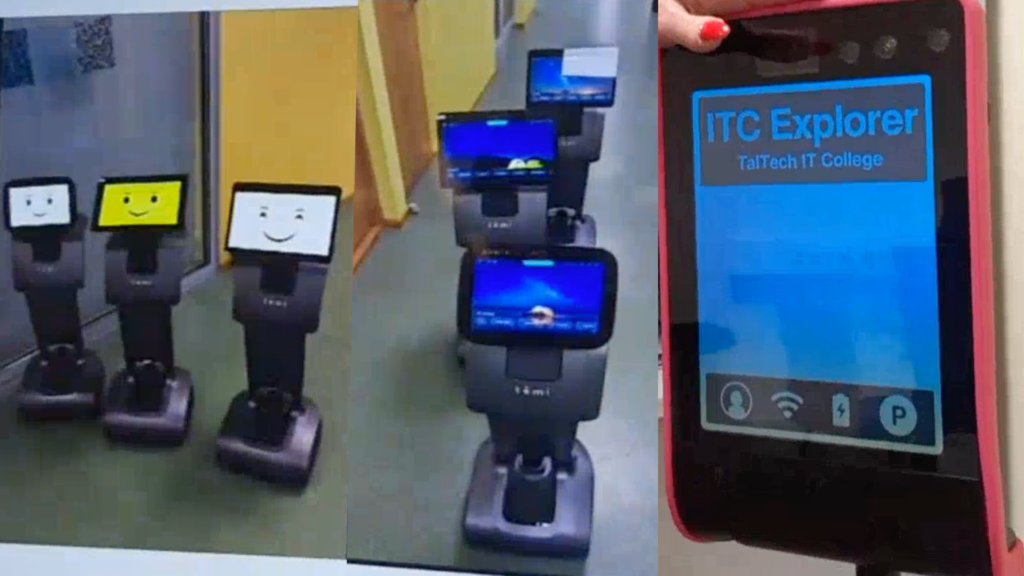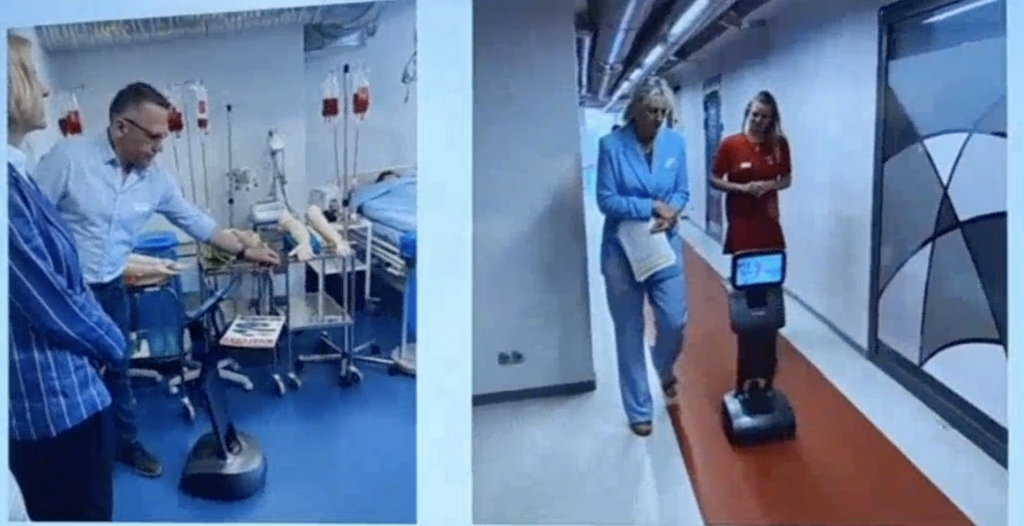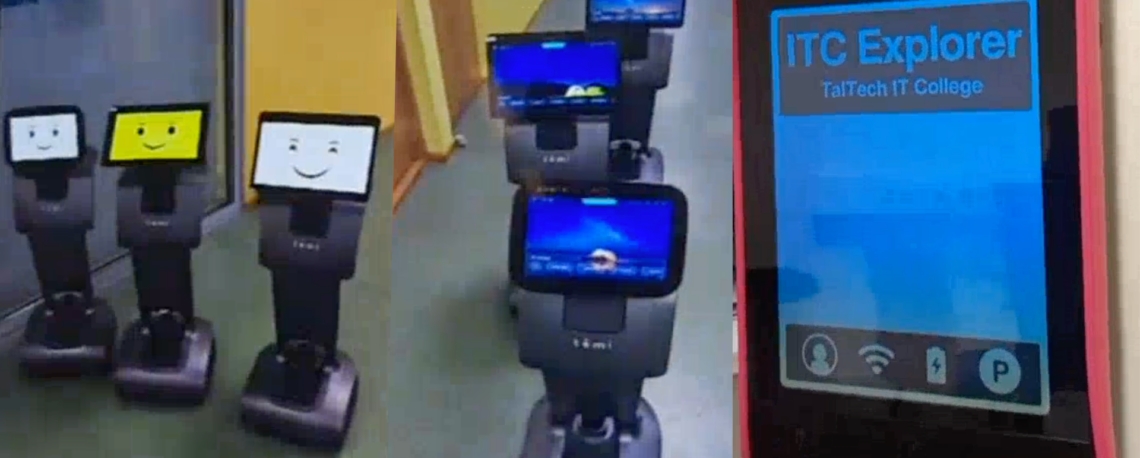During their visit to Estonia, AISS coordinators and staff had also an opportunity to visit Tallinn University of Technology and get familiar with the robots who are getting highly involved in education and health care. In the beginning team got acquainted with the research that had been conducted in TalTech using 3 different types of telepresence robots and focusing on higher education and health care.
Robots Ohmni and Double 3 are oriented towards teleconferencing, and temi, a personal assistant and service-oriented robot. Ohmni is a mobile telepresence robot that combines high-definition video with clear audio for seamless remote collaboration, while Double 3 is a self-driving, two-wheeled videoconferencing robot. Temi is a video-oriented, autonomous personal artificial intelligence assistant robot. It can recognize and follow when requested, save preset locations, and navigate around home, office, and health care while connecting to friends, family, colleagues, patients, care givers and web services.

Higher education use
The pandemic obviously pushed forward the need to develop higher education towards hybrid and online learning. Not only students but also lecturers no longer see the need to be physically present. About 50% of the staff see a benefit in executing activities online, but only 10% use telepresence robots.
However, online learning tools also require rethinking didactics such as acoustics, physical arrangements and communication etiquette. These must be considered to enable a smooth experience with the telepresence robots. Furthermore, best practices are just forming on how to interact with persons using/in telepresence robots; for instance, it is not nice to talk from behind or move the robot by lifting it unless requested by the persons represented by the telepresence robot. Also, the distance between humans and telepresence robots is under investigation. There seems to be variation between people on how close they come. These might be related to the social distance people are accustomed to in their cultures and how trustworthy the technology is felt. However, the robots also restrict the interaction distance due to their technology and the task at hand.
Health care use
TalTech has been experimenting with the temi on such cases as service and personal assisting-oriented tasks. For instance, when guiding patients to the doctor or bringing items to patients in a hospital environment. The next experiment will take place in a shopping mall and focus on how people react to robots in a mall.

One of our interests is how much one can alter the robots, for instance, by programming tasks to the robots. Discussing these alteration possibilities, temi was clearly the best. We learned that temi has well-thought-out features for such activities. For example, it has implemented security measures; one cannot use face recognition without taking into consideration the specific regulations that are in place; it has the potential for various types of navigation and robust indoor navigational features. It also has better microphones and speakers to allow communication with wider physical distance. Temi has an extra camera, which would allow further programming such as object recognition.

At the end of the meeting, guests agreed to keep contact for further collaboration in higher educational settings within the scope of the AISS programme and provide opportunities for 3 universities to experiment with courses with telepresence robots with the support from Tallinn University of Technology. In addition, further collaboration between Tampere University and Tallinn University of Technology could be organised in the field of health care.

